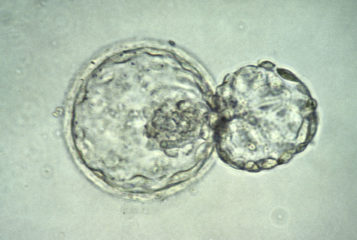A human stem-cell-based embryo model (SCEBM) which includes some of the supporting structures required for embryonic development may enable further understanding of the earliest stages of human embryogenesis.
Researchers from the University of Texas Southwestern Medical Centre used pluripotent stem cells to develop structures called 'peri-gastruloids', which can give rise to the amniotic cavity and yolk sac - extraembryonic components essential for embryonic development and tissue formation. These structures can help to provide a more accurate model of processes involved in early development, genetic disorders and birth defects.
'By generating peri-gastruloids, researchers can mimic and study the complex processes that occur during gastrulation and early organ formation, which is a critical period in embryonic development', said Dr Jun Wu, assisistant professor of molecular biology, who led the study. He added, 'This allows for a better understanding of the molecular and cellular events that shape the formation of different tissue layers.'
In particular, peri-gastruloids will be useful for studying gastrulation, an early stage of mammalian development during which the embryo first organises into a multi-layered structure, thought to occur between 17 and 21 days after fertilisation. Gastrulation has long been difficult to study, as current regulations – including those mandated by the Human Fertilisation and Embryology Act – prevent researchers from developing embryos beyond 14 days (see BioNews 1194).
Peri-gastruloids and other types of SCBEM resemble embryos during early development, yet are created without eggs or sperm. Peri-gastruloids include structures that mimic an amniotic cavity, a yolk sac and an embryonic disc.
Similar to work published in Nature last month, in which researchers at Yale University used human pluripotent stem cells to develop SCBEMs that also include extraembryonic tissues (see BioNews 1196), peri-gastruloids might enable a variety of processes that occur during early development – including tissue formation and cell differentiation – to be more accurately analysed.
'The ability to model human development using peri-gastruloids can provide insights into the mechanisms behind tissue formation and differentation' said Dr Lizhong Liu the lead author of the study published in Cell. He added, 'This knowledge can be applied to improve regenerative medicine approaches, such as generating specific cell types of tissues for transplantation or repairing damaged organs.'
The researchers note that their peri-gastruloids do not accommodate placenta formation, due to the exclusion of trophoblasts. This ensures that peri-gastruloids are non-viable.
Sources and References
-
UT Southwestern stem cell biologists develop embryo model
-
Modeling post-implantation stages of human development into early organogenesis with stem-cell-derived peri-gastruloids
-
Researchers generate human embryo-like structures that include extraembryonic tissue
-
Researchers use extraembryonic tissue to produce entities that resemble human embryos




Leave a Reply
You must be logged in to post a comment.